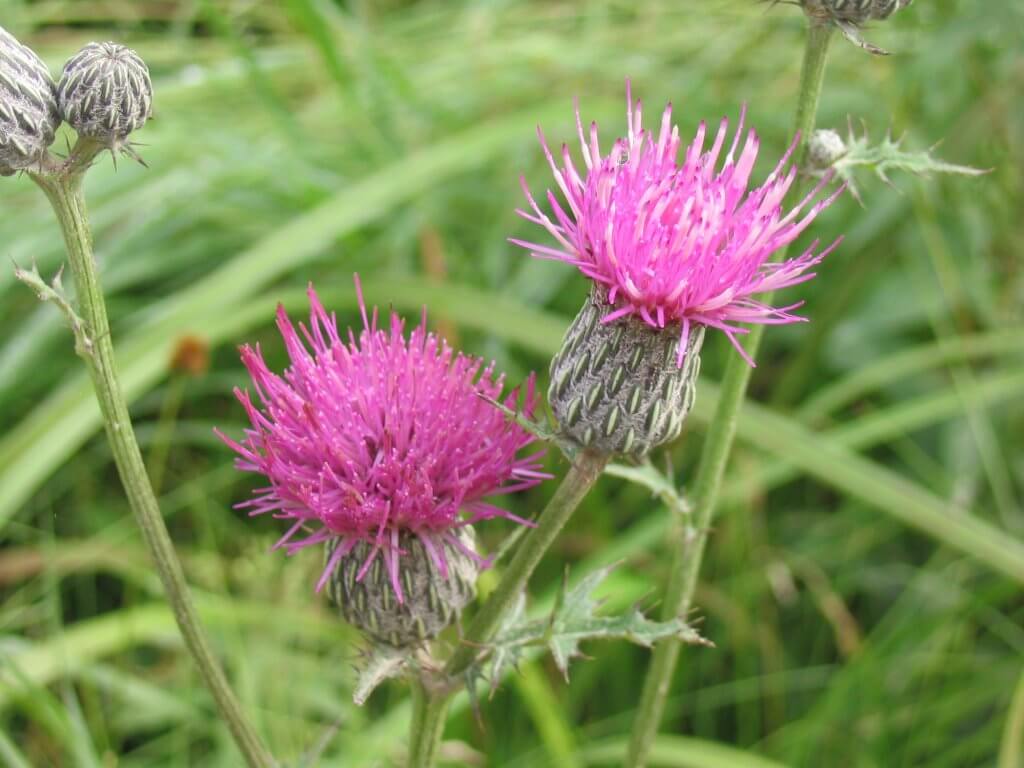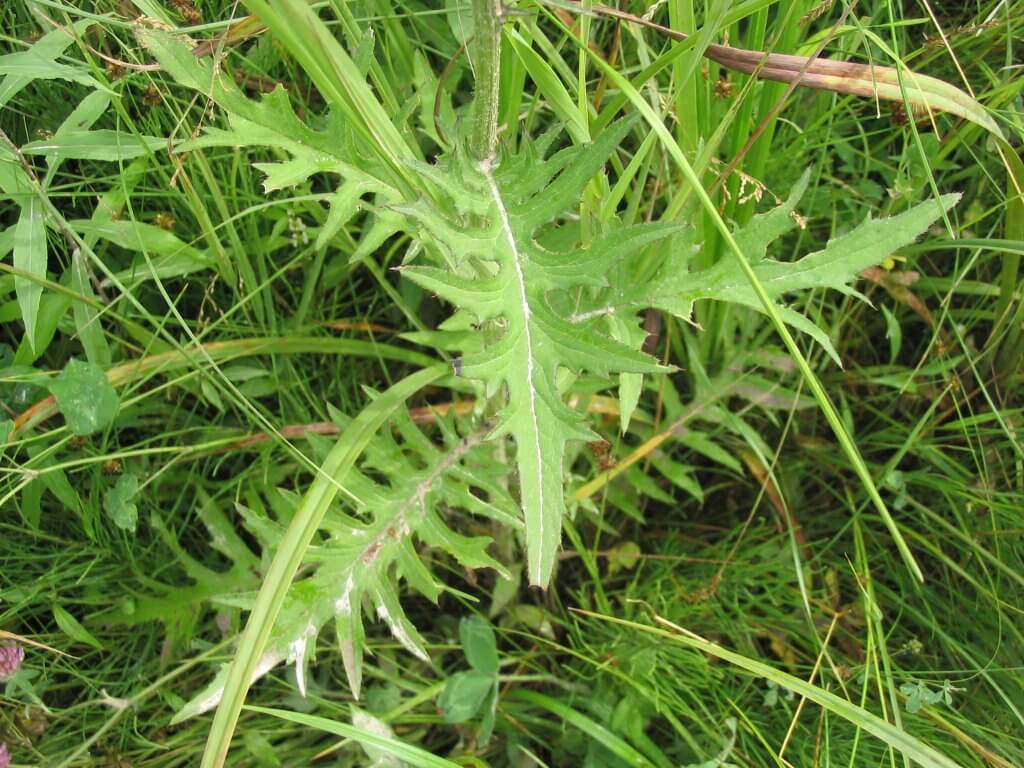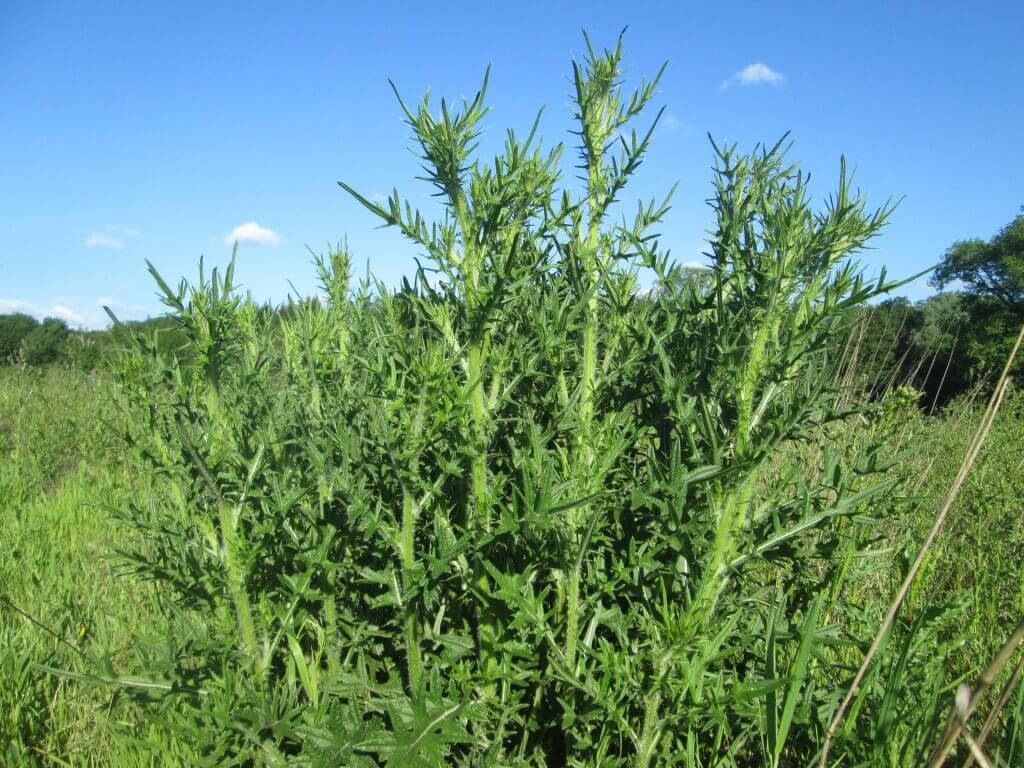Thistles (Cirsium spp.), are a diverse group of plants, noted for their spiky and impenetrable exteriors. There are species native to each continent, and no matter where they grow, they are almost always treated as weeds. You may be surprised to learn that under that intimidating exterior lies a nutritious wild edible.
In North America there are over 60 native species, with the majority found in the southwestern states, particularly California and Arizona. A high number of introduced species can be found too. The bull thistle (Cirsium vulgare) and creeping thistle (Cirsium arvense) are now very prolific across the US, although they are originally from Europe.

The yellow thistle (Cirsium horridulum), swamp thistle (Cirsium muticum) and pasture thistle (Cirsium pumilum), are each native to the eastern and midwest states.
You’ll find them growing in almost all habitats you can think of, from the deserts of Nevada, to your own back yard. The flower head is the most recognisable feature, usually with a pink, purple of yellow cluster of thin, densely collected petals. Depending on the species they can reach heights of up to 2m. The leaves, stem and bulbous base of the flower heads bare an impressive collection of spines.
Edible parts and other uses
The young leaves, inner stems, base of the immature flower head and also the roots (in their first year) are all edible. One important obstacle to remove before adding thistle into a pan are the notorious spikes. Often whilst preparing the leaves, you will find that you’ll need to remove almost all leaf mass to remove the spines. Leaving you only with the central leaf stem. The main stem of the thistle is a little easier to prepare. Running a knife gently along its length will peel away the outer skin and spines.
It may take a little extra effort to harvest and prepare, but the mild celery like taste and crunch is a pleasing payoff. Thistle can be added into a salad or soup, pickled or boiled/roasted and served as a side dish.

The base of the young flower head can also be plucked and cooked. It resembles a mini artichoke, and can be used in a recipe in much the same way.
The root has a similar taste to that of the burdock root. It can be cooked in the same way, by adding to a stew or soup.
Native Americans valued many thistle species as a source of medicine. It was used as an astringent, anti-inflammatory and also steeped with water to create a drink that soothes sore throats.
Cautions
All thistle species are edible, meaning its a safe and easily recognisable plant for foraging beginners. The obvious caution are the spines, some species have very long and thin but strong spikes, so strong gloves should be worn when harvesting. It is often best practice to wear eye protection too, as the spines can cause severe scratching if they get into the eye.
Foraging
Finding a local supply shouldn’t take long! Be sure to take gloves with you on your foraging trip. Thistle can be harvested throughout the year, but spring will provide the sweetest and best tasting harvest.
If you are considering planting your own supply, the swamp thistle is usually considered the easiest to manage and harvest.

Did you know…
Native Americans utilised the feathered seed heads of native thistles to create the feathered end of small blowgun darts.
Conclusion
Perhaps you have your own patch in an area of the yard you were hoping to clear, one day. As well as being nutritious and tasty, they are also an important source of food and shelter for pollinators and butterflies. So think twice before uprooting that patch of ‘weeds’! Whilst the leaves are a little tedious to prepare, the taproot and main stems are easier to de-spine, particularly in the swamp thistle.
—————Written by Hannah Sweet
Hannah is a freelance writer and graphic designer from the UK. With a penchant for travelling, photography and all things botanical, she enjoys writing about a wealth of topics and issues, from conservation and slow living, to design and travel. Learn more about her writing and design services at www.sweetmeanders.co
Many of our readers find that subscribing to Eat The Planet is the best way to make sure they don't miss any of our valuable information about wild edibles.
See our privacy policy for more information about ads on this site







One Response
Thanks alot